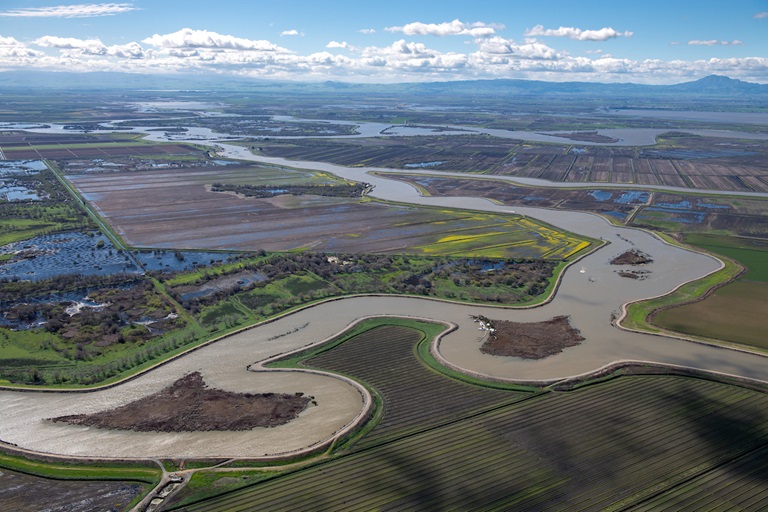EcoRestore: Restoring California's Great Estuary
An aerial view of the Delta. DWR/2019
The Sacramento-San Joaquin Delta is the largest estuary on the West Coast. It’s a maze of floodplains, rich farmlands, and leveed waterways that helps provide freshwater to 27 million Californians. For centuries, the Delta was a dynamic and rich ecosystem of tidal wetlands, riparian forests, and vast seasonal floodplains.
But about 98 percent of the native habitat disappeared after the Gold Rush and a population boom across the Golden State. The spike in human development contributed to a decline in native fish, wildlife, and plants. The State of California recognizes the critical need to restore the Delta’s natural habitat and protect water for fish and human uses. In 2015, the California Natural Resources Agency embarked on an initiative to restore 30,000 acres habitat across the Delta.
In 2018, the California EcoRestore initiative broke ground on five habitat restoration projects that create new tidal wetlands, establish new riparian habitat, and improve fish passage through flood infrastructure built over a century ago.
The Department of Water Resources is the lead agency on 28 of 30 EcoRestore projects, including those that launched last year. The ecological restoration of today also supports the modern Delta as a place for people to live, work and play.
EcoRestore is about unifying the partner agencies and organizations involved in Delta environmental restoration, and accelerating results.
Watch the video below to learn more about how EcoRestore projects seek to repopulate salmon, smelt and other endangered species by either improving flood infrastructure or creating sustainable habitats.
